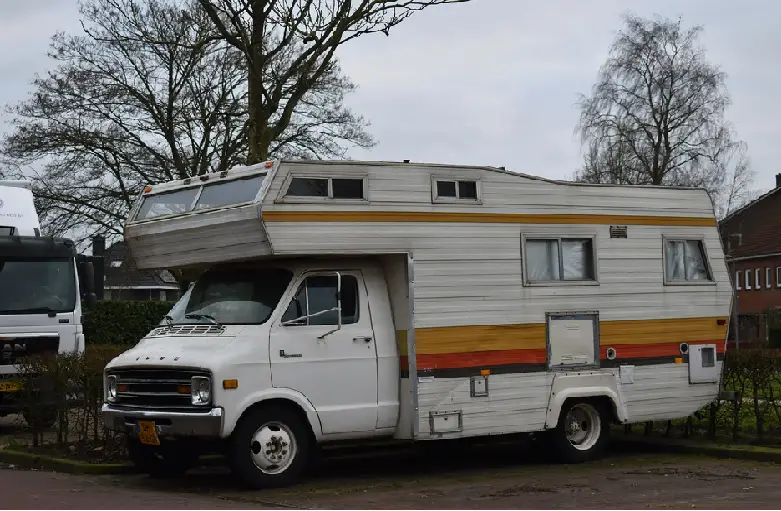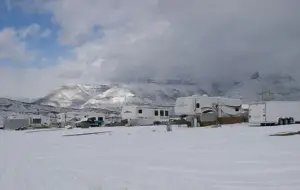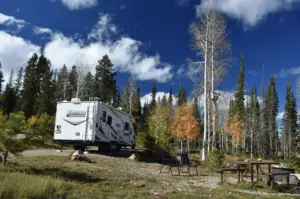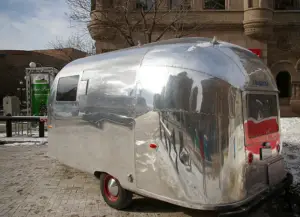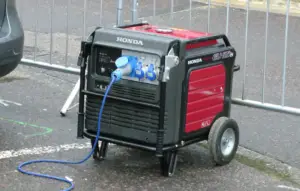At a glance, new RV rubber roofs are extremely appealing but they always demand additional support to retain the appeal and importantly enhance their durability.
Harsh climatic conditions including hot and humid/wet conditions may subject your RV rubber roof to damage due to chalking, streaking, or mold and mildew growth.
Wind can further accelerate the problem by promoting the spread of mold/mildew.
So, how do you keep these roofs clean?
It’s particularly important to have a cleaning process that you can always follow depending on the type of RV rubber roof, and the nature of stains.
Basic cleaning tips for RV rubber roof
Below tips will help you cleaning a rubber RV roof in a better way.
1. Wear good grip shoes for safety
Whenever working from a high place, it’s best to watch out for yourself. It is advised that whenever you climb at the roof of your RV to clean it, ensure you wear shoes with a good grip. Also, do not step backward- you could fall and sustain major injuries.
After you begin the job, you still have to bear in mind that soap and water make a surface dangerously slippery. You can still try to be safer by using a spotter to keep watch on you.
The ladder you use to climb should also be firmly secured against the RV. Everything else you’ll need for the job, such as water in a bucket, should then be hoisted up using a rope.
Walking across the RV is also big as it significantly increases the risk of tripping and tumbling down.
Once everything is set, it’s time to clean the roof.
2. Sweep bigger debris first
Just like you’d do on any other cleaning job, getting rid of the bigger pieces of debris is the better way to begin cleaning the RV roof.
Next, inspect the RV roofing for defects such as bumps, cracks, soft spots, and ripples on the roofing material. Check for any mold or mildew, or any other contaminant that could be destroying the roof. Clean the mold/mildew with bleach or vinegar diluted in water.
Closely examine the caulk and seams on windows, doors, and any other edges to ensure they still perform as expected.
If there are streaks of dirt running down under the seals, then that’s a leak already and should be fixed before any other thing.
3. Rinse off loose dirt first
Even before scrubbing or scouring anything, rinse off the loose dirt from the RV roof. The best way to do this is to spray down both sides of the roof and the front and back.
You may want to guard the side with plastic sheets to prevent the running dirty water from leaving stains.
If you were to apply the cleaner before an initial rinse, the cleaner would leave sticky, dirty trails as it drips down the sides of your RV. In the worst cases, the dirt messes up with graphics on the RV.
4. Use long handle brush
You should essentially make two considerations for the brush. If you would like to clean (scrub) the roof from a ladder, a sponge mop with a long handle would be preferable.
The long handle allows you to reach a big area at a time without risking walking on the wet and soapy RV roof.
Also, a medium bristle brush is preferable for general scrubbing work. At the same time, any stains require a soft bristle scrub to get the dirt off without damaging the coating on that particular spot.
5. Avoid petroleum, abrasive or acid cleaners
The right cleaner is as important as the cleaning itself. Since petroleum-based distillate reacts with rubber, it’s best to avoid such cleaners here.
Using such cleaners results in the loosening of the adhesives in the coating, whose first sign is the swelling of the roof membrane. The swelling is often uneven and may result in loose spots almost immediately after direct contact with the detergent.
Also, avoid abrasive cleaners or acid as these can easily corrode the rubber voiding the warranty and ultimately leading to premature wear of the roof.
The RV manual comes with instructions on what classes of detergent to use for cleaning. You can use the non-petroleum-based cleaning detergents diluted in water.
Sap residue can be best dealt with using a mineral spirit and a soft-bristled brush.
6. Clean from front to back
Cleaning back and from front to back is the safer way of cleaning the roof, as you do not have to walk over the wet surface whenever adjusting the ladder.
You can clean 3×3 feet sections each time.
Simply apply a small amount of detergent and scrub moderately. Rinse off the dirt every time before advancing the ladder to clean the next part.
7. Rinse sidewalls
Like with the roof, rinse the sidewalls to prevent the accumulation and dirt from the dripping water. If unchecked, the dripping water could cause residue buildup, leading to more inconveniences.
Always mind your steps as you clean and rinse the top, avoiding movement as much as necessary.
You should also be aware of the air conditioning vent on the roof as you could easily stumble over it.
8. Overlap scrubbing and rinsing between sections
Cleaning in sections means that you may end up with some sections not looking as clean as others.
To avoid this overlap scrubbing so that there are no visible boundaries left. You may need to repeat the scrubbing as needed, but rinse off the section you’re cleaning before moving your ladder.
Once done, check the entire roof for any residual stains or mildew and address accordingly.
9. Clean the roof at-least once every 4 months
Thorough and timely cleaning makes the job much easier the next time you do. The general recommendation is that the RV rubber roof should be cleaned at least once every six months. But, cleaning the roof every four months gives much better results.
The area that the RV is parked can also mean a tighter cleaning schedule. For example, if the van is parked under a tree or in a polluted area, it should be cleaned and maintained more often.
10. Treat the roof to avoid residue buildup
Although treating the roof after cleaning is not mandatory, it can go a long way in preventing residue buildup.
In a nutshell, RV roof treatment blocks contaminants from trees and the environment and also prevents oxidation.
You can purchase protectants depending on your type of RV roof, and if the user manual says you can do so.
11. Pressure wash but cautiously
Although pressure-washing an RV roof can degrade the seals, you can still utilize this cleaning technique sparingly. Start by setting the maximum pressure at 1300PSI.
A lot of RVers have this question, check out whether you can really pressure RV roof or not.
You should be extremely cautious with the pressure washer as some machines are strong enough to force water into the RV through the seals.
Cleaning tips for tough stains
You might have done your best to clean your rubber roof following the above processes but then you stand at the disappointment of stubborn stains which appear to be permanent.
You must inspect to determine their nature so that you can apply the most appropriate stain removal technique.
12. Use Hydrogen Peroxide for Mold or mildew stains
The normal cleaning process may remove stuff like mulberries and mold but does less in removing the stains left behind by these substances. One proven method of removing such stains involves the use of hydrogen peroxide.
A small concentration, of about three percent, of hydrogen peroxide, is needed. Although this method is certainly effective, it comes with a drawback: when used in high concentration, the chemical can streak on other parts of your roof and damage the graphics present.
Bleach is another sure stain remover that may be used to remove stubborn stains from RV rubber roofs. However, similar to hydrogen peroxide, the use of bleach and other bleach-based products can damage graphics.
Additionally, you must be precautious in the number of times you use these products; they shouldn’t be used often.
13. Use Ice for tree sap stains
If your RV rubber roof is just below a tree, there’s a high possibility that some tree sap could pour and stain it. Tree sap accounts for one of the toughest stains that can barely be removed by regular cleaning products. One method of removing tree sap entails the use of ice.
Basically, you put ice on the affected area and then give it some time to react.
The coldness due to ice loosens the bond between the tree sap and the RV rubber roof. Once it loose enough, peel off the sap layer.
The other viable solution would be to use mineral spirits. Mineral spirits are useful where the use of ice is less effective. You simply apply mineral spirits on a piece of cloth and rub it on the affected part. Be careful not to pour the spirit directly on your roof as it can cause damage.
Conclusion
Cleaning your RV rubber roof is easily done if you can divide your roof into manageable three-foot sections. Be sure to use mild detergent, preferably that prescribed by the manufacturer, together with a bristle brush.
A thorough rinse on the roof ensures that there’s no build-up on the roof’s sidewalls. In case of a tough stain, and depending on the nature of the stain, you can use bleach/bleach-based products or mineral spirits, accordingly; use these products rarely and when it’s absolutely necessary.

